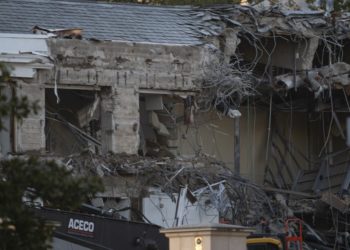BEIRUT—The new Lebanese government, elected and formed in the aftermath of a cease-fire deal between Israel and Hezbollah last year, is pursuing an audacious U.S.-backed plan to disarm all nonstate armed groups in Lebanon.
Chief among those groups is Hezbollah. The Shiite group’s iconic figurehead, Hassan Nasrallah, remains Hezbollah’s leader in spirit. “We absolutely must keep fighting,” said Ali Nassif, a restaurant owner in Dahiyeh, Hezbollah’s stronghold in the southern suburbs of Beirut. “We must honor his martyrdom.” When Israel killed Nasrallah in Dahiyeh last September—striking an underground command center with dozens of bunker-busting munitions—this shattered the group’s sense of pride and invincibility, but Hezbollah remains defiant.
The group’s new leader, Naim Qassem, said there would be “no life” in Lebanon should the government attempt to confront or eliminate Hezbollah. Lebanese Prime Minister Nawaf Salam called this a “veiled threat of civil war.” Hezbollah has been adamant that it will not discuss disarmament while Israel is still occupying and bombing parts of Lebanon.
In early August, the Trump administration presented Lebanon with a phased disarmament plan, under which Israel would cease attacks on its territory and withdraw from five positions in southern Lebanon. On Aug. 7, the Lebanese cabinet endorsed a plan from the Lebanese Army that closely aligned with the U.S. proposal. U.S. envoy Tom Barrack praised the decision, calling it a “first step” that now required “Israel to comply with that equal handshake.”
Last week, Barrack made a stunning admission in an interview with The National News. When asked what incentive Hezbollah has to disarm, he said: “Zero, I mean this is the problem, especially when Israel is attacking everybody… As it goes on [Hezbollah’s] argument gets better and better, it is: we’re here to protect the Lebanese from Israel.”
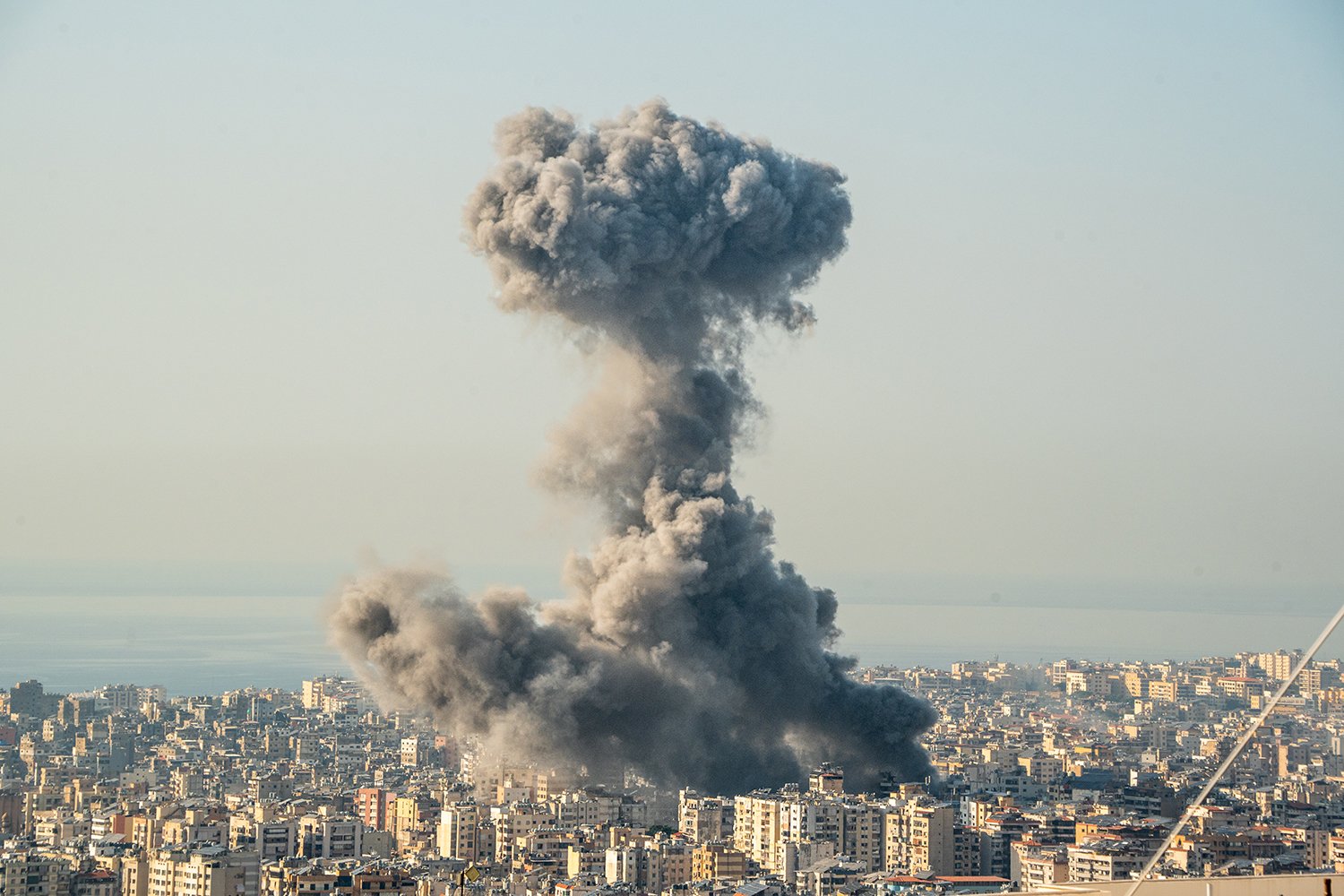
In the 10 months since the November 2024 cease-fire, Israel has carried out only a few strikes in Dahiyeh. But between southern Lebanon and the Bekaa Valley, two other areas dominated by Hezbollah, Israel has been striking almost daily, causing dozens of deaths, including civilians. Meanwhile, Hezbollah has acknowledged only one attack against Israel while denying two others, none of which caused casualties. (In a statement to Foreign Policy, the Israeli military said the two unacknowledged attacks were committed by “other organizations.”) But Hezbollah retains an unknown armed presence in southern Lebanon, experts say, despite the agreement’s requirement that its forces and heavy weapons be withdrawn to the north of the country.
Without Hezbollah’s acquiescence to disarmament, the Lebanese government is now preparing the Army for the possibility of using force—a prospect long considered anathema in a country scarred by 15 years of civil war, from 1975 to 1990. While Hezbollah refuses to cooperate, the government has secured limited concessions from moderate Palestinian factions to hand over some of their weapons in exchange for vague promises of an improvement in their civil rights.
Convincing the more militant Palestinian factions to disarm, let alone Hezbollah, though, has proved futile. And if the state is unwilling to engage in armed confrontation, Lebanon will remain in a state of limbo where Israel continues striking Hezbollah selectively and which could very likely devolve into another full-blown war.
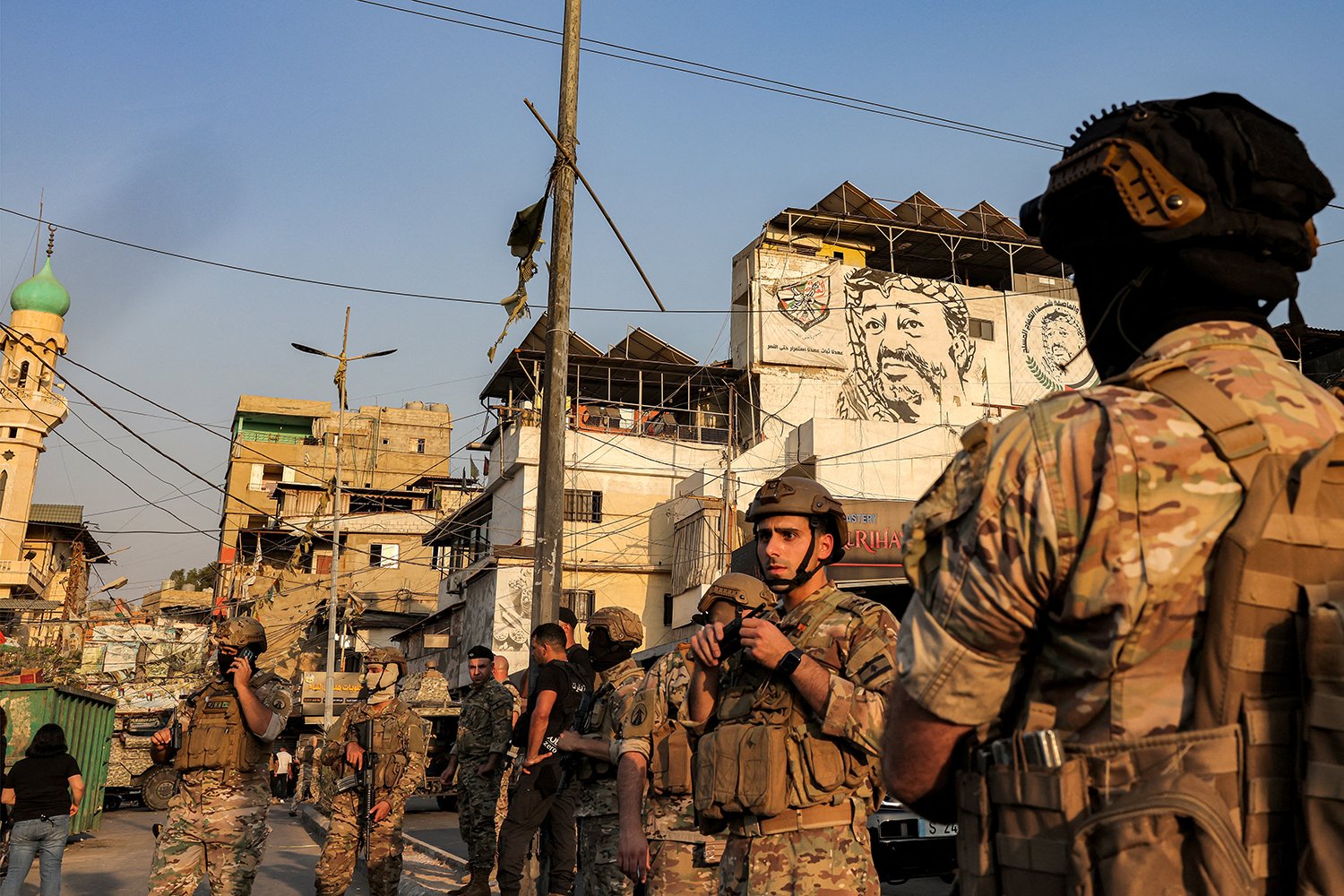
On Sept. 3, fighting broke out in Burj al-Barajneh, a Palestinian refugee camp in Beirut, injuring two. Armed clashes are shockingly common in the camps, where the government and military have no meaningful presence, leaving various factions to battle for control and legitimacy. Nothing seemed awry when I visited the next day. An Islamic charity was handing out sweets in celebration of Mawlid al-Nabi, the birthday of the Prophet Muhammad, underneath dozens of miniature flags from Fatah, the secular Palestinian party.
Less than a week before, Fatah militants had met with the Lebanese Army at that very spot to hand over a cache of weapons, including rocket-propelled grenades and other small arms. It was the third such handover since Palestinian President Mahmoud Abbas, himself a member of Fatah in the West Bank, struck a deal in May with Lebanese President Joseph Aoun to cooperate with disarmament. In a joint statement, the two leaders said they shared the “belief that the era of weapons outside Lebanese state control has ended.”
Once through the gate, Burj al-Barajneh’s factional diversity is on full display. Martyr portraits, party banners, and other assorted iconography are plastered all around. The entire constellation of Palestinian parties is represented: Hamas, Palestinian Islamic Jihad, the Popular Front for the Liberation of Palestine, and more. A refugee camp may suggest rows of tents, but in Lebanon, most Palestinian camps have existed for more than 75 years and are now dense clusters of two-to-three-story buildings.
In Lebanon, Palestinians are still considered refugees by the state, even though most were born here and have inherited the status since their families fled the Nakba in 1948. The government is planning legislation by year’s end to improve Palestinians’ labor and property rights, but it will not grant them citizenship.
The clash on Sept. 3 was between two families, one of which was affiliated with Fatah, said a local Palestinian man, 22-year-old Taha Ashi, who lives in Dahiyeh. In videos of the clash circulating online, automatic gunfire and explosions can be heard.
The lawlessness in the camp makes disarmament a welcome prospect, Ashi said. “I was robbed at gunpoint in Dahiyeh before. I defended myself somehow,” he said. “It will be much better when we have the Army and the police to prevent these incidents.”
But the two major competing Palestinian coalitions in Lebanon are split on whether to cooperate with disarmament.
The PLO, which includes Fatah, is aligned with Abbas and is broadly cooperating with disarmament. The Alliance of Palestinian Forces (APF), which includes Hamas, is adamantly opposed to it. The APF was established in Damascus in 1993 by factions that rejected the Oslo Accords and was strongly supported by the Assad regime.
Since the fall of Bashar al-Assad last December, the PLO has become the dominant force in Burj al-Barajneh, said Badie al-Habet, a local Fatah representative. Guiding us through the camp’s cramped alleys, he stopped at a monument to Palestinians killed in 1985, when Lebanese militias backed by the Assad regime besieged the camp to drive out PLO loyalists. Habet’s uncle is buried there.
“As our president [Abbas] said, these weapons served their purpose and are no longer useful for confronting Israel. On the contrary, they are a burden on the Palestinians,” Habet said. The 1969 Cairo Agreement recognized the armed status of Palestinians in Lebanon and allowed them to conduct cross-border raids against Israel. But Palestinians in Lebanon no longer have the wherewithal, or, for many, the inclination, to launch attacks against Israel.
“We believe in the Lebanese Army and the government of Lebanon, and we have opened new relationships with all the Lebanese parties—from the far right to the far left,” he added.
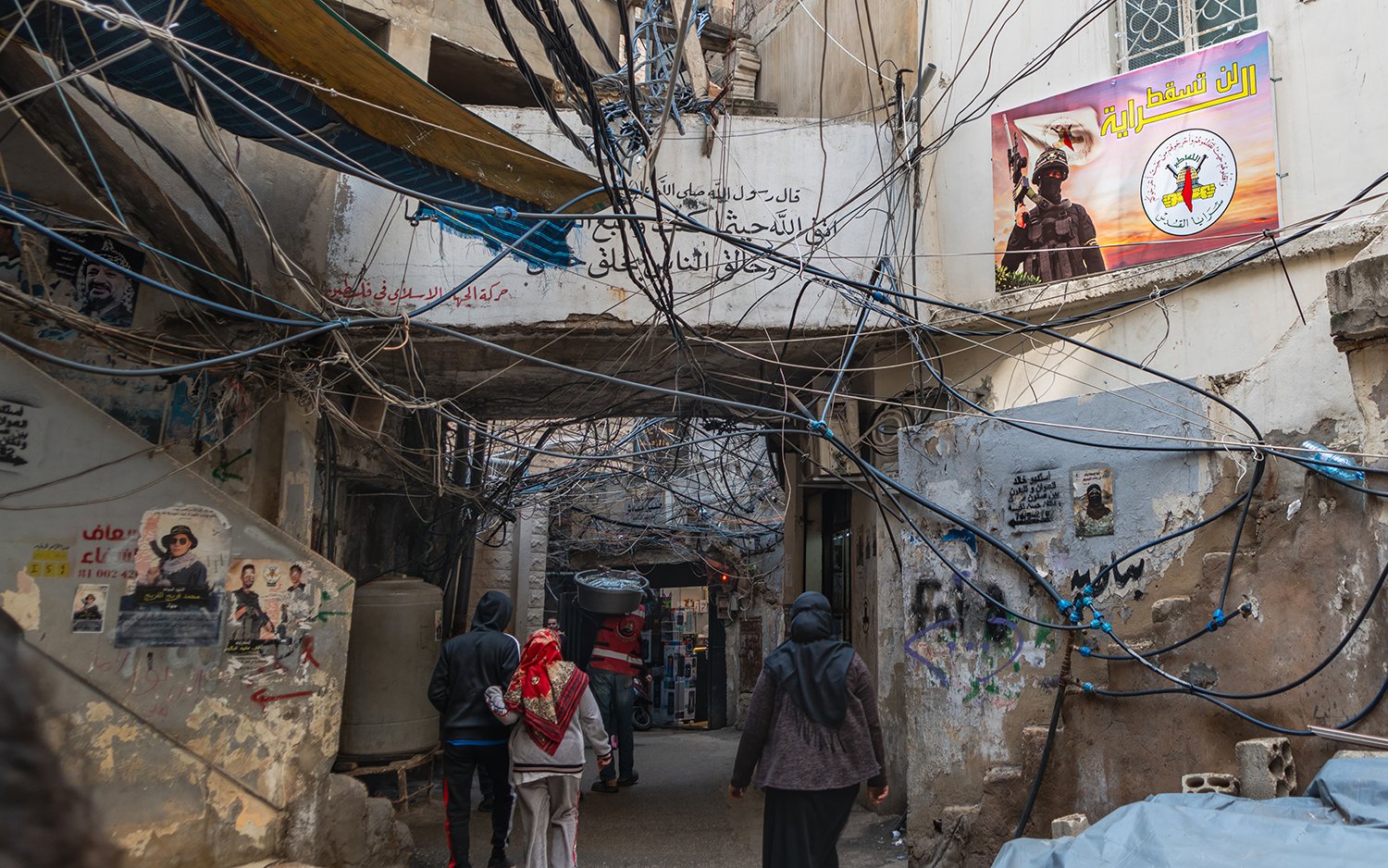
On Sept. 5, an armed clash broke out in the Shatila refugee camp, this time the result of a dispute between drug traffickers, injuring three. Shatila is known for one of the worst atrocities of the Lebanese Civil War, when an Israeli-allied Christian militia, the Lebanese Forces, stormed into the camp and slaughtered thousands of people in September 1982. The massacre ensued shortly after the United States brokered a deal to disarm the camps—a bitter point of contention for Palestinians opposed to the current U.S.-backed disarmament plan.
Today, the Lebanese Forces are a political party instead of a militia and have been one of the foremost supporters of disarmament. “There is no going back to a situation in which we have militias alongside the Army—whether that be Hezbollah, the Palestinians, or any other group,” said Marc Saad, a spokesperson for the party.
Two days later, the dust from the clash had settled, and I entered Shatila. The camp looks a lot like Burj al-Barajneh, only somehow even more cramped. Some 25,000 people live in this space of less than a 10th of a square kilometer, according to Naji Dawali, a Fatah member and secretary of the camp’s PLO-aligned Popular Committee. Hamas and its APF allies have their own rival committee in Shatila—which is responsible for managing the water—while the PLO committee deals with the electricity, Dawali said. Both groups coordinate on external and security matters, he said, without offering specifics.
62-year-old Mahmoud Hashem survived the Shatila massacre and still lives in the camp. “These clashes are making people fed up and making them demand that for God’s sake, take away the weapons and let the state in. But we have always demanded real assurances that we won’t be killed,” he said.
According to Habet, it is possible that the Lebanese Army could begin patrolling the camps alongside Palestinian security forces, but no such decision has been made. If the government cannot impose a new security paradigm on the camps and bolster Fatah, then a heavily armed Hamas could take advantage of Fatah’s weakened state.
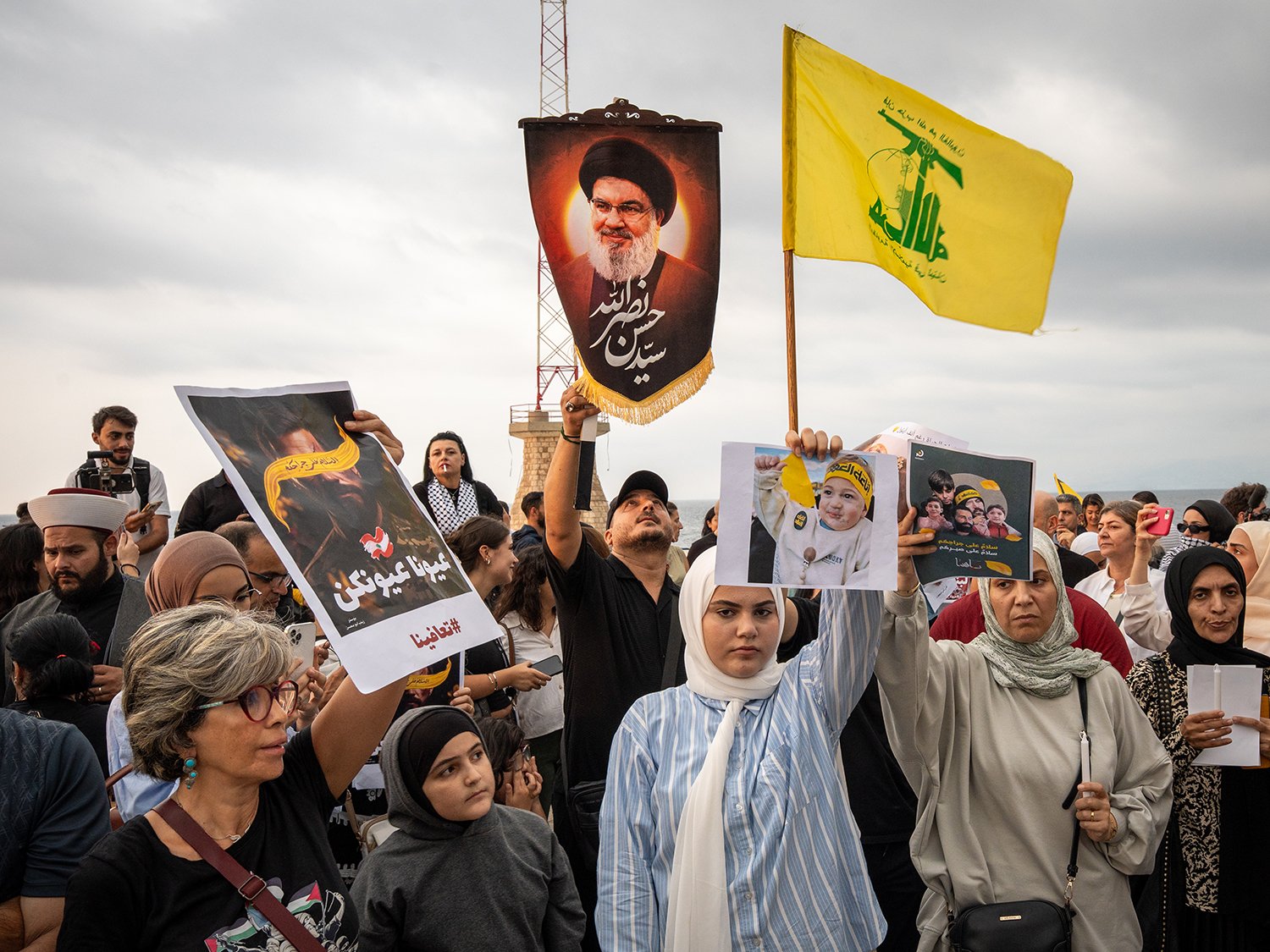
Following the November 2024 cease-fire and the fall of the Assad regime shortly thereafter, the Lebanese Army began quietly seizing weapons from Hezbollah and Palestinian factions, before an official disarmament plan was even submitted.
“There were five tunnels in Lebanon affiliated with the Syrian regime, some in the southern suburbs of Beirut and some in the Bekaa Valley, which were used by the [APF]. After the fall of the Syrian regime, the Lebanese Army took over the tunnels and confiscated the weapons,” said Ahmad Loufti, a PFLP representative in Shatila.
In southern Lebanon—where Hezbollah suffered its worst losses in last year’s war—the Army says it has dismantled hundreds of weapon caches, depots, and tunnels, many of them abandoned. The Army has described these as “search and sweep” missions. The extent of Hezbollah’s knowledge or cooperation is unclear—but the group did not formally hand over any of its arsenal.
On Aug. 9, shortly after the Lebanese cabinet asked the Army to draft a disarmament plan, the Army attempted to seize a Hezbollah weapons depot in southern Lebanon. As troops entered the facility, there was an explosion, killing six soldiers. According to Hanin Ghaddar, a senior fellow at the U.S.-based Washington Institute, citing Army sources, the facility was booby-trapped by Hezbollah. This incident could foreshadow the bloody cost of a large-scale confrontation with Hezbollah, which appears willing to fight to retain the most important parts of its arsenal.
Hezbollah is also resisting through its influence within the state. On Sept. 5, the Lebanese cabinet met again to discuss the Army’s plan. But before it could even be presented, five Shiite ministers, including those from Hezbollah, walked out in protest. Lebanese Information Minister Paul Morcos said the Army would begin implementing the plan, “but in accordance with the available capabilities, which are limited in terms of logistics, material, and human resources.” The plan says disarmament in southern Lebanon will be completed by the end of the year but offers no timeline for the rest of the country. The details of its implementation have remained secret.
Military helicopters could be heard flying over Beirut that night as the streets of Dahiyeh flooded with defiant Hezbollah supporters. “With our soul, with our blood, we sacrifice for you, Nasrallah,” they chanted.
“What I foresee is a drawn-out process,” Al Jazeera journalist Ali Harb said on a recent episode of The Take podcast. “The Lebanese Army will find caches of weapons, perhaps in a choreographed manner, confiscate those weapons. But I don’t see a … nationwide clash between the Lebanese military and Hezbollah.”
But Ghaddar says that if the Lebanese Army does not disarm Hezbollah, then Israel will. “A confrontation between the Army and Hezbollah is not as costly as a confrontation between Hezbollah and Israel,” she said.
Anarchy and sectarian division have afflicted Lebanon for decades, and at the current rate of disarmament, the situation will remain as such. The disarmament of Fatah in Beirut shows that nonstate armed groups can be negotiated with but only those in a weak bargaining position. If disarmament remains hostage to political deadlock—with Hezbollah insisting that its arms are essential for resisting Israel and the state wary of confrontation—the prospect of peace, both with Israel and within Lebanon, will remain elusive.
The post Inside Lebanon’s Audacious Disarmament Plan appeared first on Foreign Policy.



